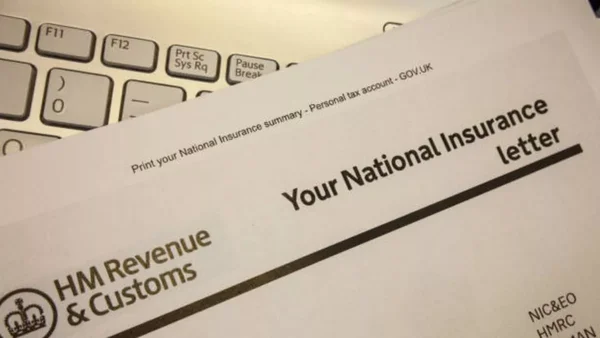What you need to know
Your tax code might look like a random assortment of numbers and letters, but it’s actually the key to how much income tax you pay each month, as it determines how much income tax is deducted from your salary or pension.
Understanding your tax code ensures you’re paying the correct amount of tax not too much, not too little.
Incorrect tax codes are surprisingly common and can cost you hundreds or thousands of pounds each year.
Most UK employees have a standard tax code, but knowing what’s “normal” can help you spot when something’s wrong.
Pie tax, the UK’s first personal tax app, checks your tax code automatically to help you avoid paying too much tax. Or if you’re just here to get to grips with it all, let’s break it down!xt...
What Is a PAYE Tax Code?
Tax codes are the alphanumeric references that tell your employer how much tax to deduct from your wages before you get paid. An employee's tax code refers to the specific code used by HMRC to determine how much tax is deducted from their income.
They’re created by HMRC based on your specific circumstances, including your income, benefits you receive, and tax reliefs you’re entitled to. PAYE codes (or paye code) are issued by HMRC and are unique to each employee's circumstances.
The most common tax code appears on your payslip, usually near where your earnings and deductions are listed. The numbers in the code, known as the code number, typically represent the amount of tax-free pay you can earn before taxes are deducted, such as your personal allowance.
You’ll also find your tax code on your P60 and on any tax coding notices HMRC sends you. These tax coding notices are also known as PAYE coding notices or coding notices, and they inform you about changes to your tax code so you can ensure the correct amount of tax is being deducted.

The Normal Tax Code for Most UK Employees
For the 2023/24 tax year, the basic PAYE tax code or standard code for most employees is tax code 1257L. This is the most common tax code used by HMRC to ensure correct tax calculations for employees.
The numbers (1257) represent your tax-free allowance of £12,570 simply remove the last digit to get the annual amount. This is your tax free personal allowance, which is the amount you can earn before paying income tax.
The letter ‘L’ confirms you’re entitled to the standard Personal Allowance available to most UK taxpayers. Tax code 1257L is one of the common tax codes used for employees with one job or pension, and it ensures you receive your tax free personal allowance.
This code applies to most people with straightforward tax situations typically those with one job or pension and no taxable benefits.
I once received a payslip with a BR code instead of my usual 1257L. My take-home pay dropped by nearly £200 that month until HMRC corrected it.
How Tax Codes Are Calculated
HMRC starts with your Personal Allowance (£12,570 for 2023/24) and then adjusts it based on your circumstances, including your employment and pension income, state pension, and any other pension income.
If you receive taxable benefits from your employer, HMRC reduces your tax-free amount and your tax code decreases. Other income, such as untaxed income or pension income, can also affect your tax code and taxable income, potentially increasing the amount of tax owed.
Additional income sources, including other income or untaxed income, might also lower your tax code, as HMRC splits your allowance between different jobs or between employment and pension income. Your employer or pension provider will use the updated code to deduct the correct tax. State pension and other pension income are also considered when HMRC calculates your tax code.
Tax reliefs, such as professional subscriptions or uniform maintenance, can increase your tax-free amount. Employees can also claim expenses for work-related costs, which may further increase their tax-free amount.
If your employee's circumstances change, such as increased working hours or new benefits, this can impact your tax position and the amount of tax owed. If there are discrepancies or underpayments, HMRC may require you to file a tax return to resolve your tax position.

Common Tax Code Letters Explained
The letter at the end of your tax code provides important information about your tax situation.
L means you get the standard Personal Allowance (most common). There are also codes like pension L, which are used when your income comes from a pension and you receive the standard allowance.
M indicates you’ve received a 10% transfer of your partner’s Personal Allowance through Marriage Allowance. This applies if you are married or in a civil partnership, and the transfer can occur between a spouse or civil partner.
N shows you’ve transferred 10% of your Personal Allowance to your partner. This also applies to employees who are married or in a civil partnership, allowing the transfer of allowance to a spouse or civil partner.
BR means all income from this source is taxed at the basic rate (20%), usually for second jobs or pension income. Codes like pension T and pension L are used to specify different types of pension income and how they are taxed, especially if you have multiple jobs or pension sources.
NT indicates no tax is deducted from this income source. This code can apply in special cases, such as for civil partners in certain situations (civil partner NT), or for example musicians who are self-employed and not subject to PAYE.
K at the start of a tax code (K code) means you have income that is not being taxed elsewhere, so your employer must collect extra tax. This often applies if your total untaxed income exceeds your allowances, and it can affect tax calculations for contractual or secondary income sources.
If your tax code ends with W1, M1, or X, it is an emergency tax code. Emergency tax codes are temporary codes used when HMRC does not have up-to-date income information, often after a change in circumstances. These codes ensure tax is deducted correctly until the proper code can be applied. Unlike cumulative tax codes, which take into account your total earnings and tax paid so far in the tax year, emergency tax codes (W1, M1, or X) calculate tax on a non-cumulative basis, resetting each pay period.
Spotting an Incorrect Tax Code
Check your current tax code against what you expect based on your circumstances for most people with one job, this should be 1257L.
If you notice a different code, it might be correct if your situation is non standard, but it’s worth investigating.
Common warning signs include a sudden change in your take-home pay or a tax code that starts with ‘K’
.
When you start a new job, your previous employer provides your tax code to your new employer via the P45. If you do not provide a P45, you might be put on an emergency tax code temporarily. Emergency tax codes are applied for each pay period until HM Revenue & Customs (HMRC) receives the correct information.
Changes in company benefits can also trigger a new tax code.
Having the correct tax code is important to ensure you pay tax, or are paying tax, at the correct rate.

What to Do If Your Tax Code Looks Wrong
Contact HMRC directly if you think your tax code is incorrect you can call them on 0300 200 3300.
You can also use your Personal Tax Account online to query your code, or check your tax code and find more information on the HMRC website.
Have your National Insurance number handy and be ready to explain why you think your code is wrong.
HMRC can update your tax code and notify your employer, who will adjust your tax deductions in your next pay.
If you’ve paid too much tax due to an incorrect code, you can claim a refund.
Final Thoughts
Most UK employees should have the standard tax code, currently 1257L for the 2023/24 tax year.
Checking your tax code regularly is an essential but often overlooked part of financial hygiene that could save you money.
If your circumstances change you start a second job, receive benefits, or earn additional income your tax code will likely change too.
When in doubt, it's always best to contact HMRC directly rather than assuming your code is correct.

Pie tax: Simplifying PAYE Tax Codes
You don't need to become a tax expert to make sure you're paying the right amount of tax each month.
Pie tax, the UK's first personal tax app, scans your payslips automatically and alerts you if your tax code changes unexpectedly.
For people with multiple jobs, the app shows how your Personal Allowance is split across different employers. The app explains tax codes in plain English, showing exactly what adjustments HMRC has made to your code.
Take a look at Pie tax if you want to stop worrying about whether your tax code is right.











